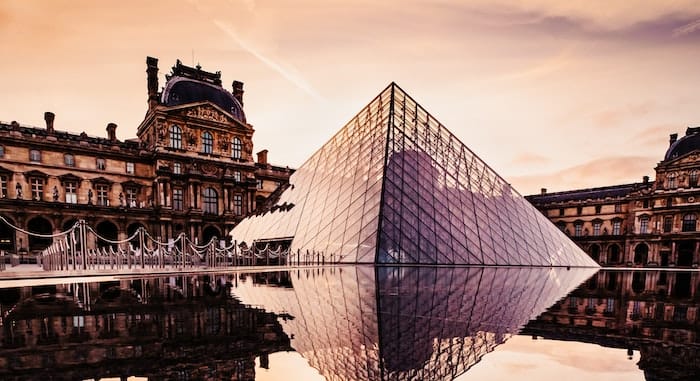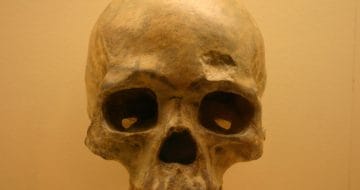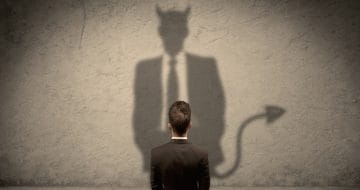The Uffizi and the Louvre are threatening to sue the world’s biggest porn site

On 14 July, Pornhub took the meaning of art lover to the next level, unveiling its new website and app that is “an interactive guide to some of the sexiest scenes in history”. As the Hungarian porn star Cicciolina explains in the promotional video, “some of the best porn of all time isn’t on Pornhub. It can only be found in a museum”.
The website is a guide to the most explicit artworks that the West’s top art galleries have to offer which, according to Pornhub, are the Metropolitan Museum of Art in New York, the National Gallery in London, the Museo del Prado in Madrid, the Uffizi gallery in Florence, the Musée d’Orsay and the Louvre in Paris.
Whilst the majority are reportedly unconcerned by this move, the Uffizi and the Louvre were quick to get their lawyers to threaten legal action. At this point, those with some familiarity with copyright law might consider this the most surprising sentence I have written thus far. You may be wondering, surely copyright protection (that typically lasts between 50-70 years after the author’s death) can’t apply to works such as Boticelli’s The Birth of Venus (painted in the mid-1480s) or even Boucher’s The Brunette Odalisque (painted in 1745)? It has to be public domain by now, right?
Most museums, as supported by A Guide to Copyright for Museums and Galleries, tend to run on the principal that “where there is sufficient skill and labour, copyright protection can be given to duplicates”. However, as Grischka Petri points out, this seems to be inconsistent with existing case law. In Bridgeman Art Library v Corel Corp (1999), the US court ruled that photographs of public domain images “lacked sufficient originality to be copyrightable”.
Judge Kaplan reasoned: “[I]t takes great skill, judgment and labour to produce a good copy by painting or to produce an enlarged photograph from a positive print, but no one would reasonably contend that the copy painting or enlargement was an ‘original’ artistic work in which the copier is entitled to claim copyright. Skill, labour or judgment merely in the process of copying cannot confer originality.”
Petri argues the durability of this judgment can be seen in the National Gallery’s unwillingness to resolve a copyright dispute with Derrick Coetzee, a graduate student at the University of California who in 2009 downloaded 3,000 images from the gallery’s website, improved the image resolution and then uploaded them to Wikimedia Commons. This leads Petri to conclude that “there is no copyright in photographic reproductions of two-dimensional works of art in the public domain”.
In light of this, what arguments could the Uffizi and the Louvre have made in order to convince Pornhub to take down ‘their’ images?
Here what counts for more than the originality test in copyright law is politics and cultural identity. The Uffizi’s strongest argument against Pornhub is in Italy’s 2004 Cultural Heritage Code that enables those who possess cultural heritage artefacts to prohibit their commercial exploitation. These measures have been upheld in the courts, with businesses being fined for using images of Michelangelo’s David and Palermo’s Teatro Massimo.
The fact that there is active political protectionism of cultural heritage in France and Italy may well have made Pornhub think twice about including these institutions. At the beginning of 2021, French senators passed a ‘sensory heritage’ law that protects the smells and sounds of French rural life following a failed nuisance lawsuit against Maurice the Rooster (famous for his noisy cock-a-doodle-dos). Similarly, in 2014 the Italian Minister for Culture publicly condemned an American advert where Michelangelo’s David is depicted carrying a rifle. Indeed, the Cultural Heritage Code even goes as far as to outlaw the commercial use of images of the Italian countryside without authorisation from a public entity.
One curious contrast between the two is the economic incentives. The Uffizi has an economic interest in the images which in 2019 raked in around €1 million from photo sales of works in its collection. It is therefore unsurprising that the Italian gallery has been quick to protect its copyright claims. The Louvre, however, has recently made its entire collection free to view online.
One might fairly assume that the Louvre would rather not be associated with the world’s biggest porn site. But there could also be a more profound tradition behind this response. In the early nineteenth century, as France was drawing up its copyright laws, the president of the French commission debating the new rules observed that back then the “droit de copie” was automatically passed to the acquirer of an original which was convenient for museum. In this arrangement, the museum acts as the defender of the author’s rights, a role that it appears never to have completely shaken off, leading to instances of copyright overreaching as Kenneth Crews describes.
As Burcu Günay points out, throughout history museums have progressed from merely exhibiting collections to being centres for observation, learning and questioning. Attempts to restrict access to these culturally important artworks goes against this trend. It also contravenes the values espoused by International Council of Museums (ICOM), where both France and Italy are influential. Although debate has recently become fraught over the extent to which museums should play an active role in society, the ICOM agrees that museums have a core social public function. Accessibility is therefore key to achieving these goals.
Copyright need not present a barrier to this, but instead should facilitate this public function. Yet this latest move is reflective of an old mindset that can’t keep up with a world that has a different understanding of the museum and new copyright laws. In light of this, perhaps the Uffizi and the Louvre should reconsider their legal threats before they fail to live up to their institutional expectations and become an exhibition of hypocrisy.
William Holmes is a future trainee solicitor at a magic circle law firm.



